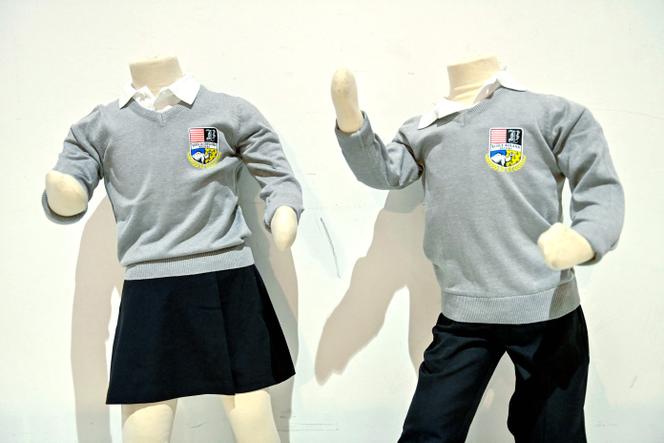


What if school uniforms, which are only now being tested in France, put a brake on physical activity? A recent study has not argued in favor of its generalization. Researchers at Cambridge University in the UK studied data from nearly 1.1 million children aged 5 to 17 worldwide, in 135 countries. According to the results of their work, published in Journal of Sport and Health Science on February 15, it was found that, in countries where the majority of schools require compulsory uniform, fewer young people tend to adhere to the 60 minutes of moderate to vigorous physical activity per day recommended by the World Health Organization (WHO). "The proportion of all students meeting the WHO recommendations in countries where uniform-wearing was the norm was 16%; this rose to 19.5% in countries where uniforms were less common," according to the report.
This difference was even more marked for girls in elementary school. Moreover, the gap between girls and boys was greater in high-income countries where uniforms were compulsory, than in middle- or low-income countries. A 2021 study highlighted that uniforms deter British teenage girls from taking part in certain activities, with the wearing of skirts turning them away from wheeling, for example. "Other data also suggests that primary school-age girls [under 12] are more active and less sedentary on days when they are not wearing their usual uniform," the researchers also said.
Yet, uniform or not, less than half of the world's children and adolescents met the WHO recommendations; only half of boys and a third of girls aged 6 to 17, according to the 2022 edition of the "Report Card" from the National Observatory of Physical Activity and Sedentary. The gap, which is constant between boys and girls, appears early, between the ages of 2 and 6, and increases with age. At the same time, sedentary lifestyles are reaching alarming levels, as screen time continues to increase.
This is why the French government has declared physical activity and sport to be a major national issue and is attempting to generalize the practice of 30 minutes of daily physical activity at elementary school. Reading this study, it's worth wondering whether the recent plans to wear uniforms are not in contradiction with this policy.
"Historically associated with a conservative vision of school, of order, supposed to reduce social inequalities, the uniform has not been thought through in relation to movement. Instead, it's synonymous with an immobile, forgotten body," said Guillaume Dietsch, lecturer in sciences and techniques of physical activities and sports at Paris-Est-Créteil University and author of the book Les Jeunes et le sport. Penser la société de demain ("Young People and Sport. Thinking Of Tomorrow's Society"). This goes against the grain of today's fight against sedentary lifestyles. And yet "physical education and sport are supposed to be places of learning, education and emancipation for girls and boys," he said.
You have 14.95% of this article left to read. The rest is for subscribers only.
